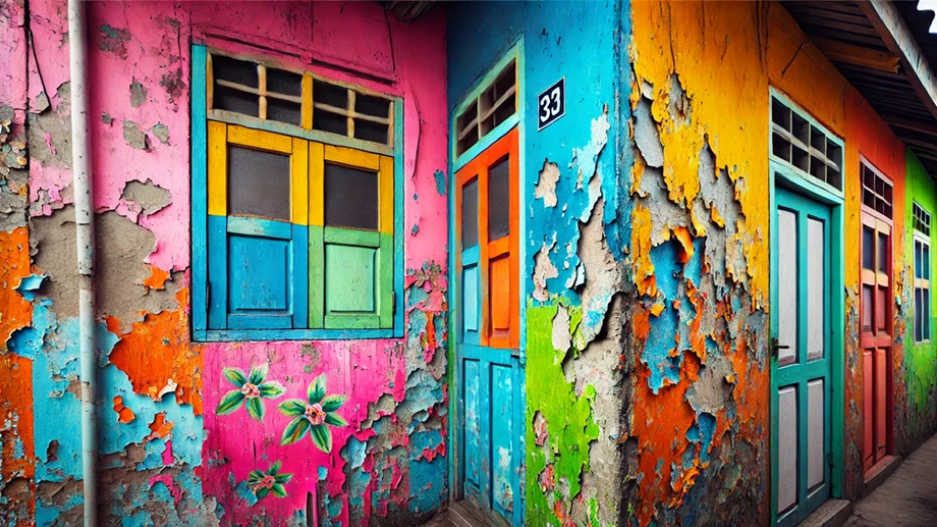
A new World Bank report highlights Indonesia’s escalating lead paint crisis, revealing significant health and economic costs due to widespread lead exposure, particularly among children. Nearly half of Indonesian homes contain toxic lead paint, so the report stresses the need for immediate regulatory action to protect public health and reduce long-term economic losses.
Urgent Report Exposes Indonesia’s Escalating Lead Paint Health Crisis
A recent World Bank report, A Toxic Threat to Indonesia’s Human Capital: Prevalence and Impact of Lead Paint in Indonesian Homes, has laid bare the grave health risks posed by the widespread use of lead-based paints in Indonesian homes. The report, authored by William Seitz and Imam Setiawan, unveils shocking statistics on lead exposure and paints a disturbing picture of its effects on Indonesia’s human capital, especially on vulnerable children. Despite mounting evidence of severe health impacts, regulatory action remains voluntary, leaving millions exposed to one of the most dangerous environmental toxins.
A Hidden Threat in Nearly Half of Indonesian Homes
The World Bank’s 2023 survey found that about 45% of Indonesian homes—an alarming proportion—have interior lead paint, and for households with children under five, the exposure rate is even higher. Approximately 10.2 million children live in homes coated with lead-containing paint, putting their developing brains and bodies at severe risk. Lead poisoning in children often leads to lifelong cognitive impairments, including decreased IQ, attention disorders, and behavioral issues. Unfortunately, young children are more prone to accidental ingestion of lead dust and paint chips, which commonly accumulate in homes with aging, deteriorating paint.
The crisis is exacerbated in poorer regions, like Maluku and Papua, where up to 77% of homes with paint tested positive for lead. Without effective national regulations, lower-income households bear the brunt of the health risks, as lead dust is especially prevalent in homes with poorly maintained or chipping paint.
Toxic Paint on the Market: No Regulation, No Warning
One of the report’s most disturbing findings is the pervasiveness of lead in paints sold across Indonesian markets. Roughly 77% of commercially available paints tested positive for lead, with many brands containing dangerously high concentrations. Even though some products are labeled “lead-free,” this label is often misleading, as many still test positive for lead, particularly in popular shades like white, cream, and green. With the absence of mandatory lead-free labeling, consumers remain unaware of the dangers lurking in these common household products.
Health and Economic Toll: A National Concern
The health and economic costs of lead exposure are staggering. The report estimates that lead-related health issues could be costing Indonesia between 0.8% and 1.7% of its national income annually. Children’s reduced cognitive capabilities due to lead exposure are only part of the story; adults, too, suffer from lead-induced health issues, including cardiovascular problems and kidney disease. These health consequences translate into lost productivity, higher healthcare costs, and, ultimately, a weakened workforce and economy. For Indonesia, addressing this crisis isn’t merely a public health imperative; it’s essential for preserving the nation’s economic future.
Regulatory Gaps: Indonesia Lags Behind Global Standards
Although countries around the world are increasingly implementing strict bans on lead in consumer products, Indonesia’s standards are voluntary and lack enforcement. This regulatory gap leaves Indonesia’s citizens vulnerable, especially compared to the 94 countries that now impose binding restrictions on lead content in paint. Even as the World Health Organization recommends lead concentrations be limited to below 90 parts per million (ppm) in paints, Indonesia’s guidelines remain non-binding, resulting in little accountability for manufacturers.
Key Recommendations for a Safer Future
The World Bank report calls on Indonesia to enforce binding regulations that limit lead content in all paints. Recommendations include transitioning paint manufacturers to lead-free alternatives, implementing a buy-back program to remove lead-containing products from the market, and launching a national blood lead surveillance program. Raising public awareness and educating consumers on the risks associated with lead in paint are also critical for immediate risk reduction.
Indonesia’s past success in eliminating leaded gasoline and banning lead in children’s toys shows how decisive action can yield positive public health outcomes. Establishing binding lead standards in paints would protect public health and align Indonesia with best practices worldwide.
A Toxic Threat to Indonesia’s Human Capital, published by the World Bank, makes a compelling case for urgent regulatory reform. The evidence is clear: Indonesia’s voluntary standards are insufficient, and without immediate action, lead exposure will continue to claim lives, limit potential, and strain the nation’s economy. Transitioning to strict, enforceable regulations is an investment in Indonesia’s future health and prosperity.
- READ MORE ON:
- Lead poisoning
- Indonesia
- health crisis
- lead paint exposure
- World Bank report
- regulatory gaps
- children’s health
- environmental hazards
- public health risk
- human capital
- toxic paint
- FIRST PUBLISHED IN:
- Devdiscourse


Comments1
Being told electing Black Hitlers is Democracy
Being told electing Black Hitlers is Democracy